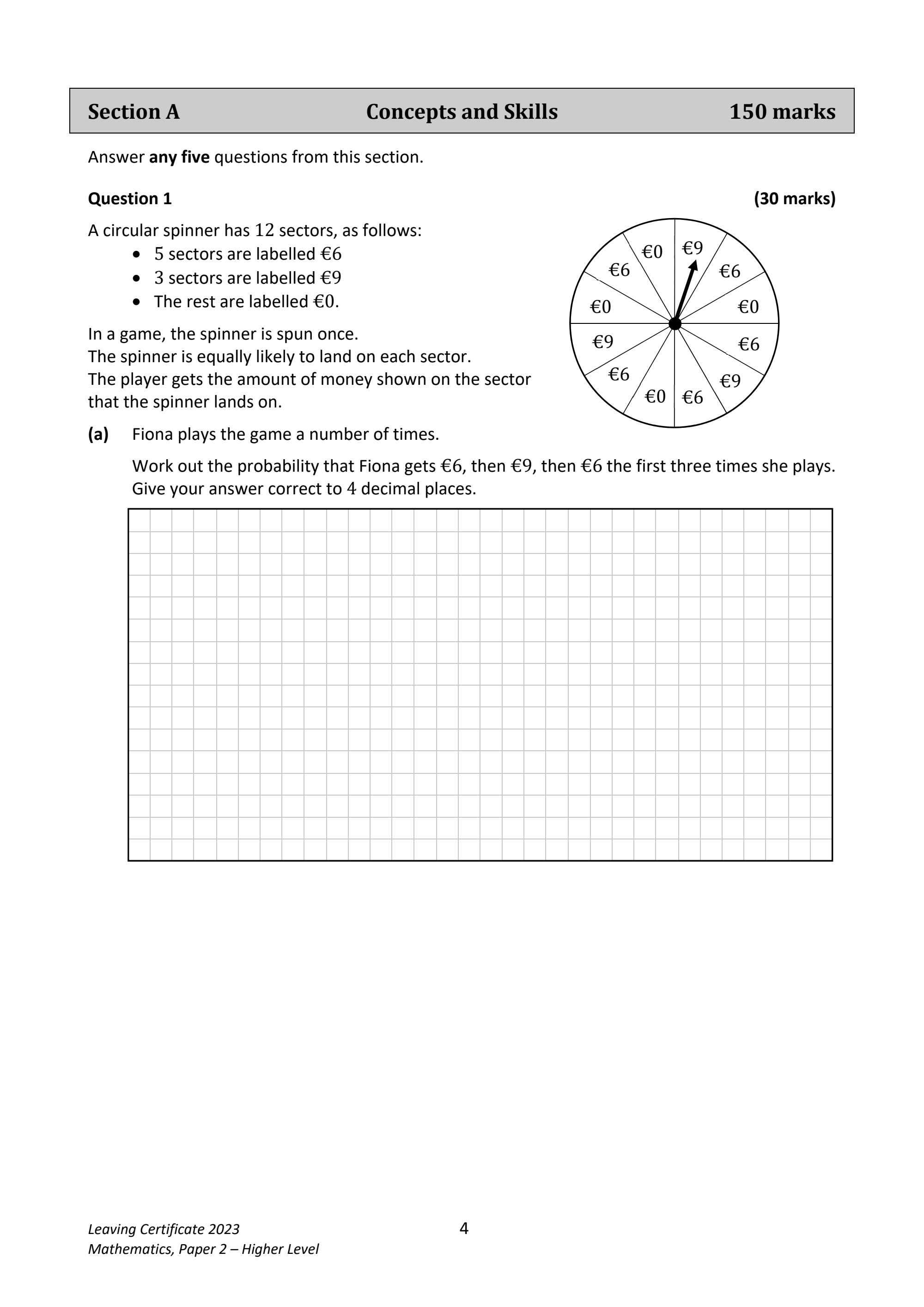Students were overcome with relief after a “fair and approachable” higher level maths paper two, following a tricky and challenging paper one on Friday.
“The student reaction between papers one and two was like night and day,” said Niall Duddy, ASTI subject representative and a teacher at Presentation College, Athenry.
“Students were so much more satisfied coming out of the exam today, although the trend of mixing topics across the two papers continued, with calculus appearing in part of question seven, which was mostly trigonometry,” Mr Duddy said.
Stephen Begley, Studyclix subject expert and a maths teacher at Dundalk Grammar School, said that candidates had lots of opportunity to showcase their knowledge on a fair, doable and well-set higher-level maths paper two.
RM Block
“After a rocky start for many with paper one, maths paper two saw a fair, doable and well-set exam giving students lots of opportunity to showcase their knowledge of the typical topics,” Mr Begley said.
Louise Boylan, a maths teacher at the Institute of Education, said that the paper was nonetheless challenging, with some dauntingly text-heavy questions.
“Well-scaffolded questions mean that students who attempted every element had plenty of
opportunity to accrue marks, even if they found the overall question tough,” Ms Boylan said.
“It is clear that the exam-setters are emphasising the need for a firm critical approach and so their questions are more ‘creative’ than in previous years. There was a requirement for interpretation and comprehension in order to piece out the right approach for how to proceed. Again, many students will find this a cause for pause. However, well-scaffolded questions meant that a stumble in an early part didn’t rule out the later sections.”
Mr Begley said that the “usual suspects” of probability, statistics, trigonometry, coordinate geometry and geometry appeared in well guided and well prompted questions.
The short questions each spanned a single topic, Mr Begley said.
“Probability, trigonometry, coordinate geometry of the line and the circle, statistics and geometry boasted a short question each and were certainly generous in what they asked. The questions were clear, direct, and very workable.
Mr Duddy said that students, on the whole, were happy enough with the ordinary level paper.
“There were a lot of questions, and trigonometry, area and volume had a big presence,” he said.
Jean Kelly, a maths teacher at the Institute of Education, said that the ordinary level paper was very fair.
“There were plenty of opportunities for all students to earn valuable marks, while those looking for the O1 will have a chance to distinguish themselves,” Ms Kelly said.
“Every expected topic appeared. Questions had lots of helpful clarifications to avoid confusion or needless barriers.
“In particular, the first five questions eased into the paper with a series of straightforward, methodical questions. Some might second-guess themselves, thinking there was some missed trick in the phrasing, but there was no abstract trap to be found.
“This was a general trend for the whole paper – the examiner was very good at clarifying
what they wanted – either through clear directions or helpful explanations of potentially tricky
terms. They really wanted to test your grasp of the concepts, not your reading comprehension.”
There were, however, some twists and surprises, with parallelogram construction appearing for the first time in a quarter of a century, and simultaneous equations of the line and circle - normally paper one topics - making an appearance, Ms Kelly said.
Try this one at home
– From maths paper 2, higher level:



















